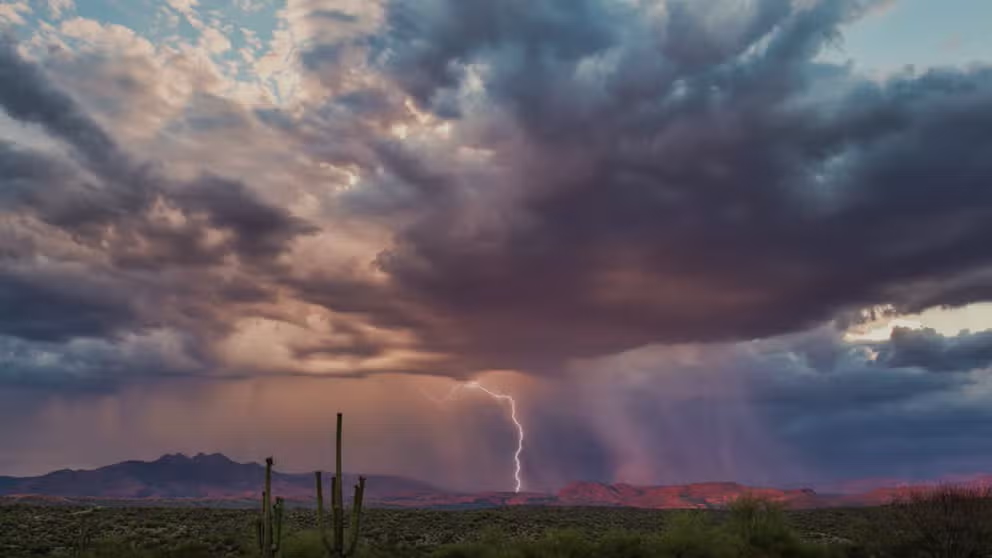Southwest monsoon season is here: What you need to know
For the three summer months of the year, the Desert Southwest can be home to quite a bit of rain -- flooding rains even -- thanks to the monsoon season.
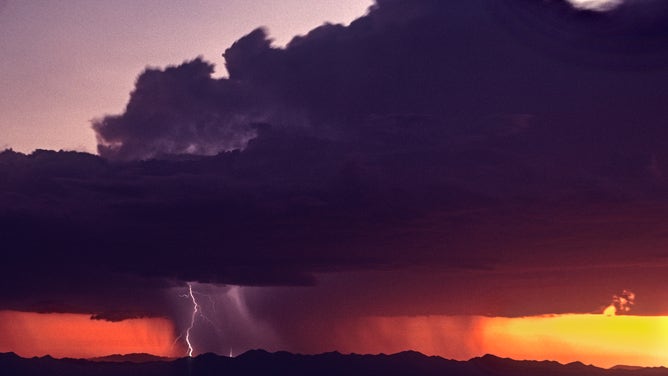
Mature cumulonimbus cloud at sunset, with rain shaft and lightning, Avra Valley, Tucson, Arizona.
(Wild Horizons/Universal Images Group / Getty Images)
The Desert Southwest has quite the obvious reputation for being an arid place where cactus grow amid the mostly barren landscape, only punctuated by the occasional small town or sprawling metropolis.
But for the three summer months of the year, it can be home to quite a bit of rain – flooding rains even – thanks to the monsoon season.
The Southwest monsoon season kicks off June 15 and lasts through Sept. 30.
7 Facts About Monsoon Season
Here are 7 facts about monsoon season.
IT'S OFFICIAL: WORLD ENTERS EL NINO CLIMATE PATTERN
The monsoon onslaught could be a little late this year though, thanks to El Niño.
"El Niño events can delay the onset of the monsoon in Arizona and New Mexico by weakening and repositioning the subtropical high that guides moisture into the Southwest," wrote NOAA's Climate Assessment for the Southwest team.
The authors said that El Niño can enhance tropical storm development in the Pacific, which can feed monsoons later in the summer.
"El Niño events also influence development and strength of tropical storms in the eastern Pacific Ocean, and moisture associated with these storms has the potential to deliver above-average rain to the region, typically in late summer or early fall," CLIMAS continued.
The National Significant Wildland Fire Potential Outlook forecasts a below-average monsoon season for 2023.
Monsoon season in the Southwest
A monsoon is a term given to a shift in wind patterns that blow tropical air toward typically desert locations, and Arizona and the Desert Southwest certainly qualify.
According to the National Weather Service, a ridge of high pressure in Mexico blocks any moisture from reaching the Desert Southwest in June, allowing for days of hot, dry weather. As July approaches, the ridge drifts north into the Four Corners region of the U.S., allowing some tropical moisture to be carried north from the Gulf of California and the Pacific Ocean into the Southwest.
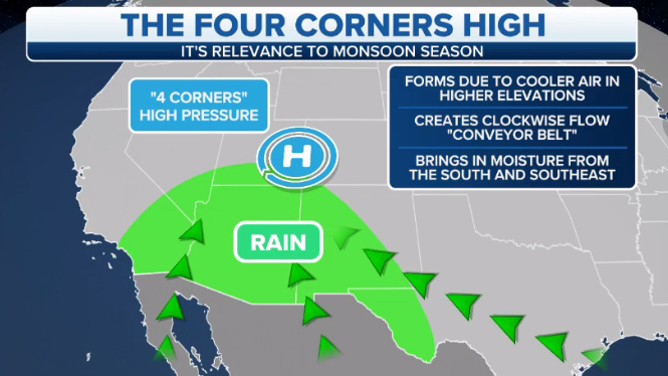
(FOX Weather)
Combine the desert heat with the copious amounts of tropical moisture, and you have a setup ripe for strong thunderstorms with torrential rains. What's more, northern Arizona is home to the Mogollon Rim, an area of high elevation that can provide the additional lift needed to trigger thunderstorms that will often drift into the Phoenix area.
"Storms would typically develop along the Mogollon Rim, which is north and east of Phoenix, and storms can then move downslope into the lower deserts ... and help produce dust storms," said Stephanie Olmo with FOX10 Weather in Phoenix.
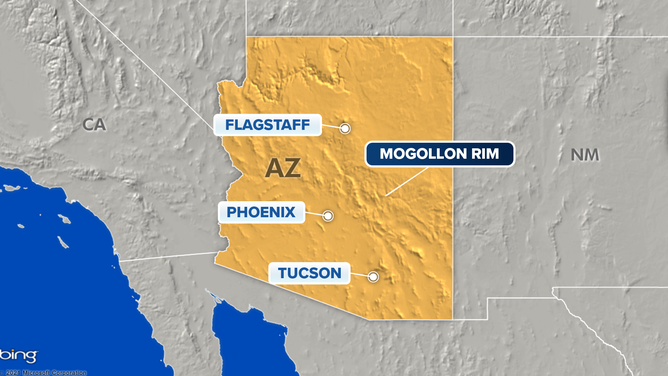
(FOX Weather)
Arizona gets the most attention during the monsoon season, but the phenomenon also affects New Mexico, southern Utah, Nevada and Southern California. When the pattern aligns just right, monsoonal moisture can be carried north into the Pacific Northwest.
The monsoon's strength varies from summer to summer but is a critical lifeline to the Desert Southwest's water supply, with 40-50% of annual rainfall provided by monsoonal storms. In the past decade, Flagstaff, Arizona, had as much as 15.7 inches of rain during the 2013 monsoon season, but it didn't even manage 2 inches (1.78 inches) in 2020.
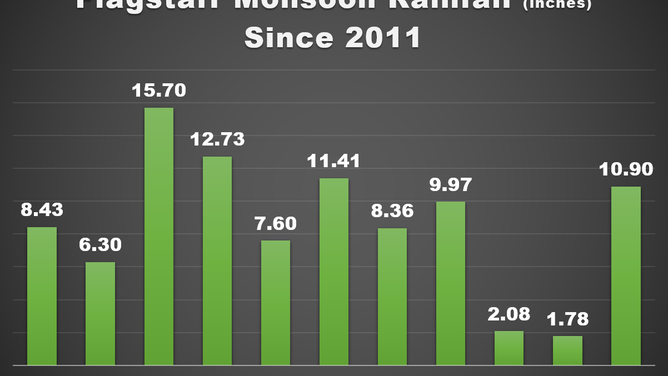
Flagstaff rainfall during monsoon seasons.
(National Weather Service, Flagstaff)
The 2021 season was among the wettest in recent years.
According to NOAA, the monsoon is a Catch-22 in the wildfire season, with frequent lightning at the start of the season triggering wildfires in the arid landscape. Once the monsoon gets going for a few weeks, and the rains follow, the wildfire danger usually drops.
As summer fades and the continent begins to cool in September, the monsoon season weakens as the conveyor belt of tropical air begins to falter. Forecasters warn some lingering, late-season storms can end up being the most severe as cooler air from the Pacific Ocean mixes in and provides greater instability in the atmosphere.
Be sure to download the FOX Weather app to track any storms in your area and receive potentially life-saving weather alerts issued by the National Weather Service. The free FOX Weather livestream is also available 24/7 on the website and app and on your favorite streaming platform. The FOX Weather Update podcast also provides weather information for the entire country.
